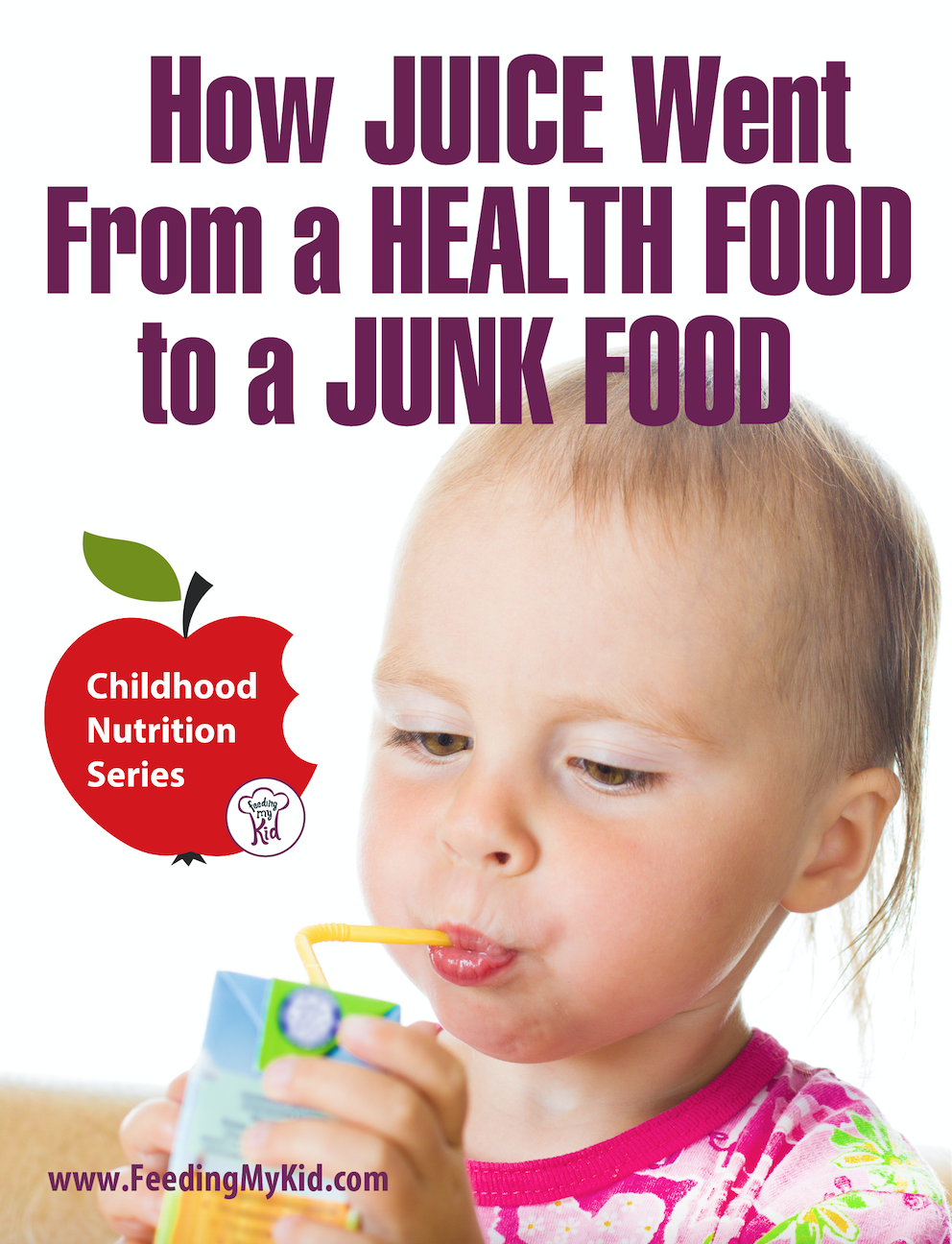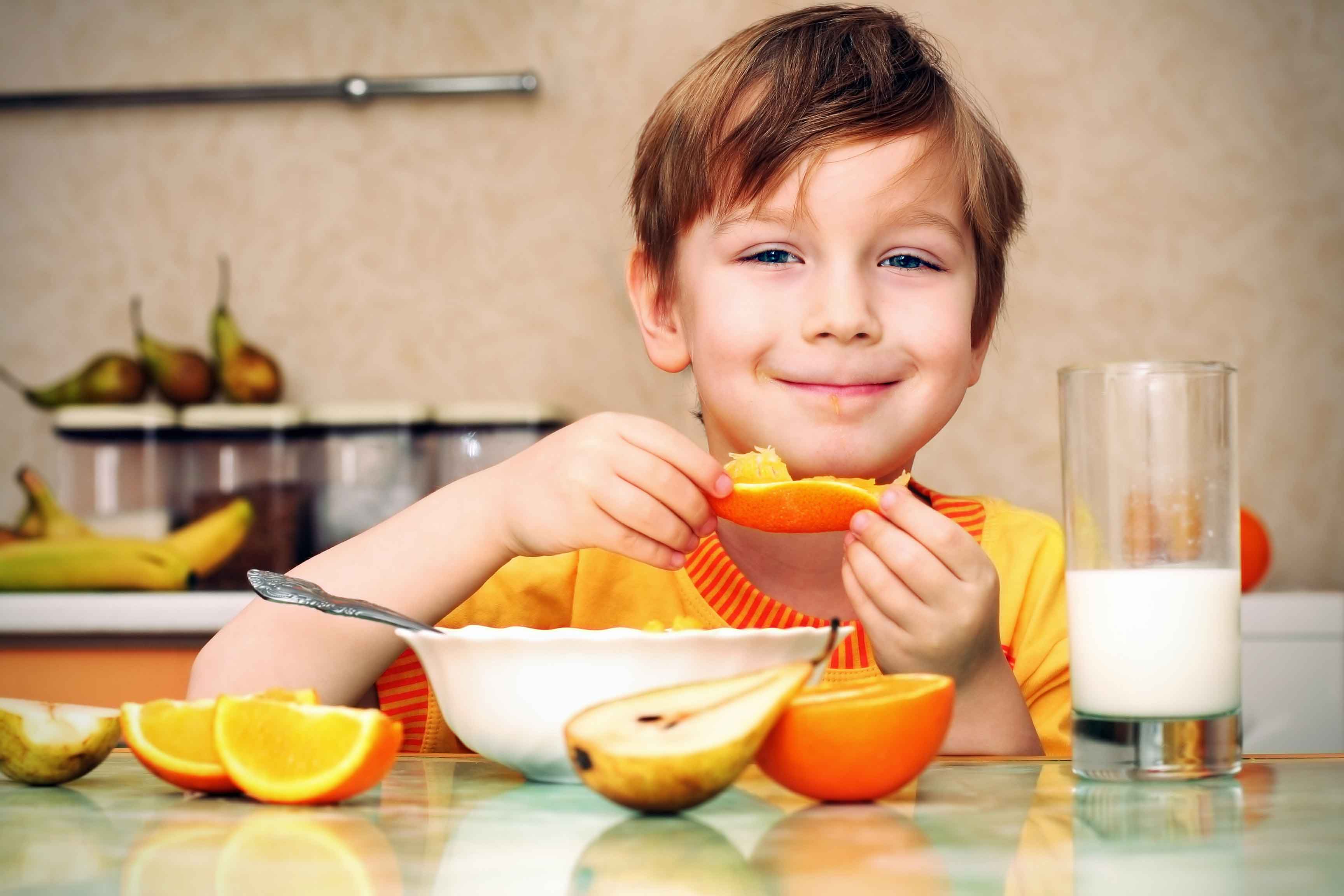 Juice manufactures have done an amazing job at positioning fruit juice as a healthy drink for kids and adults. And why wouldn’t it be? It’s 100% fruit juice. It’s all natural. And, we know fruit is healthy.
Juice manufactures have done an amazing job at positioning fruit juice as a healthy drink for kids and adults. And why wouldn’t it be? It’s 100% fruit juice. It’s all natural. And, we know fruit is healthy.
So is juice healthy or unhealthy? As you’ll find out it depends.
How Can Fruit Juice Not Be Healthy?
Drinking juice isn’t the same as eating an orange or an apple.
Despite the fruit juice’s healthy claims on TV commercials and those found on the bottle, it is scientifically proven that fruit juice is more of a junk food than a health food.
No matter if the fruit juice is organic, conventional, freshly squeezed or from concentrate, sugar added or no added sugar, fruit juice is not a substitute for fruits.
When manufactures juice fruit they discard one of the healthiest parts, the fiber, and leave the juice, which is primarily sugar known as fructose. The average orange juice has about 21 grams of sugar. That’s nearly the daily recommended amount of sugar for an adult!
The World Health Organization recommends adults should not consume more than 25 grams of sugar per day. In just one cup of orange juice, an adult has nearly consumed an entire day’s worth of sugar. Now, imagine what is happening in a child’s body with all of that sugar!
Why is Fiber So Important?
Since fiber slows the absorption of sugar in your body, it will prevent your blood sugar from spiking (3).
When your blood sugar spikes you overwork your liver and pancreas, which could lead to diabetes, obesity and other chronic health issues. Your body is trying to protect itself, so it starts to spike your insulin to help process all of the sugar that just entered your body at the same time.
Your insulin spikes to help your body process all this sugar. Having a lot of insulin in your system causes you to store fat. If you are ingesting sugar throughout the day, your insulin levels are spiked and can be causing you or your child to gain weight.
Think of it this way, it takes about four oranges to make one eight-ounce glass of orange juice. You probably wouldn’t sit down in one sitting and eat four large oranges. You can try, but you would probably feel full well before you get to number four. Now, think of how many times you’ve had more than eight ounces of orange juice in one sitting and still felt hungry afterward? And because fruit juice has no fiber, your body is hit with the sugars from four oranges all at one time.
Fiber’s other benefit is that it actually fills you up (3). Fiber is heavy and tells your body that it’s had enough. Without fiber in juice or soda, your child will still be hungry and drink or eat more. This is why soda is considered a leading contributor to the obesity epidemic.
The Science Behind Drinks
The history of orange juice is both a fascinating and horrifying tale that can help cast light on why juices—seemingly healthy, extremely tasty—can have such a bitter reputation. In her book Squeezed, Alissa Hamilton talks about the bitter truth about the world famous breakfast juice.
Orange producers many years ago, Hamilton says, began keeping large amounts of orange juice in heavy containers to store and keep safe and they could store these products for over a year at a time. Doing this meant that the orange juice had to be stripped of it’s oxygen so it didn’t go bad and could be preserved. Getting rid of the oxygen meant that the product would be completely tasteless.
Enter the taste pack.
Scientists worked day and night coming up with the perfect formula to make orange juice taste like orange juice again. Using this formula, they created a powder that can be added to the juice to make it taste like actual juice. That’s why orange juice always tastes like orange juice. Each juice product has its own distinct taste pack. Tropicana will always taste like Tropicana and Minute Maid will always taste like Minute Maid (2).
This just isn’t natural. Each orange has its own flavor, yet these products always taste the same.
What is the Price We Pay For All This Sweet Flavor?
Did you know, your body cannot tell the difference between sucrose, glucose, fructose or high-fructose corn syrup. I’ve spoken to parents who tell me this just can’t be true, but sadly it is. Your body has no ability to discern which sugar it is digesting. Now with all the sugar that’s in juices, these products are making our palates and our children’s palates get used to extraordinarily sweet foods. We are growing our child’s sweet teeth.
When your child has juice, his taste buds are enjoying an intensely sweet flavor. If you mix that with the other foods, like child targeted yogurts or snacks, there is a good chance your child is becoming accustomed to highly sweet tastes. This is only fueling your child’s picky eating ways. Researchers found that when you pair a juice with a vegetable, kids from ages 2 – 5 would eat a lot less of the vegetables compared when researchers paired the vegetable with water. When kids start to crave sugar, fat and salt this new preference is called pervasive palate preference. Kids and adults get accustomed to these flavors and start to want desire and crave them.
Think about what happens when a child drinks a sweet juice, it will bring out the bitter flavors of the vegetable even more and generally this is enough to turn a kid off from eating the vegetable. His or her taste buds are quickly learning to start at this level of sweetness, and when things aren’t sweet, they can begin to reject the food and flavor. Food manufactures engineer the flavor of food to reach this “bliss point.”
Let’s say an average child in the US drinks a glass of orange juice with their sugary cereal and milk for breakfast. All three of those foods are sweet and have natural and added sugars in them.
If your child eats this enough times, he will grow to expect a very sweet breakfast. If you offer a frittata, he may reject the food all together since it does not meet his new sweet food expectation.
How Much Sugar Is My Child Having for Breakfast?
The World Health Organization recommends no more than 25 grams of sugar per day.
Above, we mentioned a typical child might drink a glass of orange juice along with cereal and milk.
- Orange juice generally comes in between 22-24 grams of sugar per 8 oz no matter if it’s organic, conventional, freshly squeezed or from concentrate (8)
- Milk is 12 grams per 8 oz
- Fruit Loops 12 g for only 1 cup (or another similar type of cereal)
That is a whopping 47 grams of sugar just for breakfast! That’s almost double an entire day’s worth of sugar.
How can vegetables compete? And, every day we wonder why our kids are turning away from veggies?
Juice vs. Soda
As you can see, juice is losing it’s taste and healthiness all in one swoop. But you might still think that juice has added benefits when in comparing it to soda.
Most fruit juices have vitamins, minerals and other nutrients that are good for you and your child; however, the sugar outweighs the benefits. In fact, the most commonly consumed juice, Apple Juice Minute Maid, has more sugar in it per volume than a can of Coke. Let’s think about that for a minute. More sugar than a coke!
Have your child eat an apple and drink a glass of water. We want to encourage kids to eat an orange or an apple instead of drinking their fruits.
Young children who drink juice often transition to soda drinks– as they get older. Do your best to keep kids away from juices, sodas and sports drinks as they all have the same affect on your child’s palate.
Many children will drink multiple glasses of juice or soda in a single day, so multiply that for each serving your child has.
Whether you’re consuming a coke or apple juice from Minute Maid (who is owned and operated by Coca Cola), you’re getting a lot of sugar.
Sugary Drink Statistics
Here are some sugary drink statistics from the Harvard School of Health:
- According to a 5-year study, in those years US children averaged about 224 calories per day from sugary drinks. That’s 11 percent of their caloric intake!
- Between 1989 and 2008, calories from sugary drinks rose by 60% among children 6 to 11.
- Recent studies in children have found that reducing sugary drinks can lead to better weight management among those who are already not in shape.
How To Transition Your Kids Off Juice
- Instead of drinking juice, have your child eat a large variety of fruits like apples, oranges, bananas, grapes, etc. Cut up some apples for a snack or pre-slice pears or peaches. There’s plenty of ways your kids can get their fruit without having to drink juice.
- If your child is addicted to juice, start diluting the juice with water and each time add a little more water and a little less juice, until you can completely wean your child off juice.
- Make your own juice at home. You’ll know exactly what’s going into your drink. Plus, if done right, you can keep a lot more fiber in your drink than the store bought variety. There are plenty of healthy juice recipes that will be sure to get some good nutrients into your picky eater. Having your kids make juice with you is fun for everyone.
- As an adult, you are the role model, so do as you’d like your kids to do. Try to set a good example and try not to have soda or juice in front of your child.
- According to Joanna Dolgoff in her book Red Light. Green Light. Eat Right. 55 percent of families eat out each week. When eating out, be sure to order water and not juices or sodas for your kids and for yourself.
- In the end, it comes down to portion size. Studies have shown that children will consume juice throughout the day as though it were water. According to the book, Give Peas a Chance, toddlers should not be drinking more than 32 ounces of fluid a day, and, no more than 4 ounces of 100% juice a day. Start weaning your child off juice and over to water!
To reduce weight gain and the other health issues with consuming too much sugar, you should help your child cut back on consuming juice throughout the day. Doctors recommend, if you are going to have juice, cut it back to one glass a day and dilute it with water. Focus on getting your child to drink more water.
In the end, be sure to focus on creating healthy habits for your kids by creating healthy habits for the whole family.
Check out our other articles in our Childhood Nutrition Series:
- Why You Shouldn’t Put Your Child on a Diet. Do These 9 Things Instead.
- How to Best Talk to Your Kids About Their Weight!
- Why Food’s Marketed to Kids Causes Weight Gain
- How to Improve Academic Performance with Superfoods
- Bliss Point: How Taste is Manufactured
- Is Honey Healthy? or is it Just Sugar?

Additional Resources and Information
-
The Huffington Post: Soda, Other Sugary Drinks More Firmly Tied To Obesity In New Studies
-
The Guardian: How fruit juice went from health food to junk
-
Forbes: Warning Your Fruit Juice Has As Much Sugar As Soda
-
NPR: Fruit Juice Vs. Soda? Both Beverages Pack In Sugar, Health Risk
-
Harvard: The Nutrition Source – Sugary Drinks and Obesity Fact Sheet
-
Hamilton, Alissa. Squeezed: What You Don’t Know about Orange Juice. New Haven: Yale UP, 2009. Print.
-
Red Light. Green Light. Eat Right. By Joanna Dolgoff. “Introduction.” Pg. XVI. Print.
-
Health Nut Nation: Top 5 Sugariest Juices

